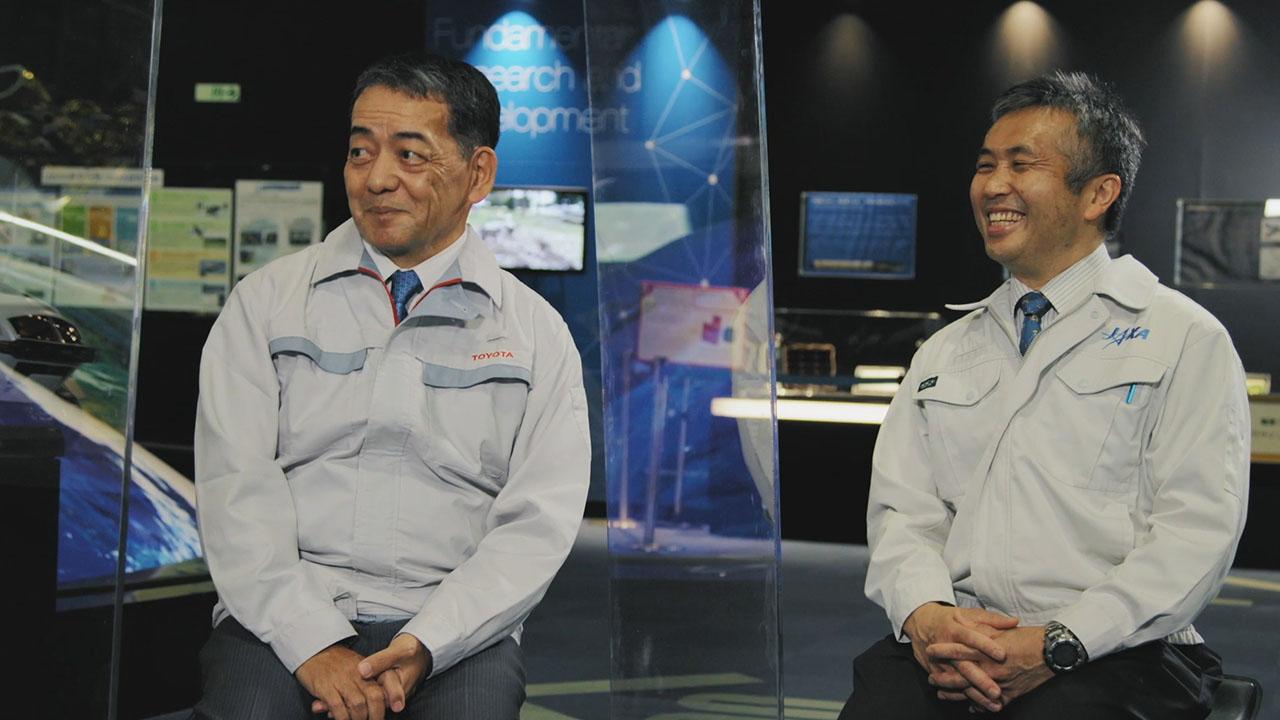
Toyota Times speaks with Toyota's Shigeki Terashi and JAXA's Dr. Wakata Koichi to learn about the joint research on "LUNAR CRUISER" project, including background of how it came together and what they hope to achieve.

Starting from last year there was an announcement about how Toyota had joined forces with JAXA to conduct joint research on developing a pressurized crewed rover for use on the surface of the Moon. Then, on August 28, the two organizationas announced that they had lovingly nicknamed the crewed rover “LUNAR CRUISER”.
Fascinated by the project and wanting to know how it started and what the goals will be, Toyota Times sat down with Mr. Shigeki Terashi, member of the board of directors and operating officer of Toyota Motor Corporation and JAXA senior advisor and astronaut, Dr. Wakata Koichi, to learn more.
A project saved by Toyota’s Terashi
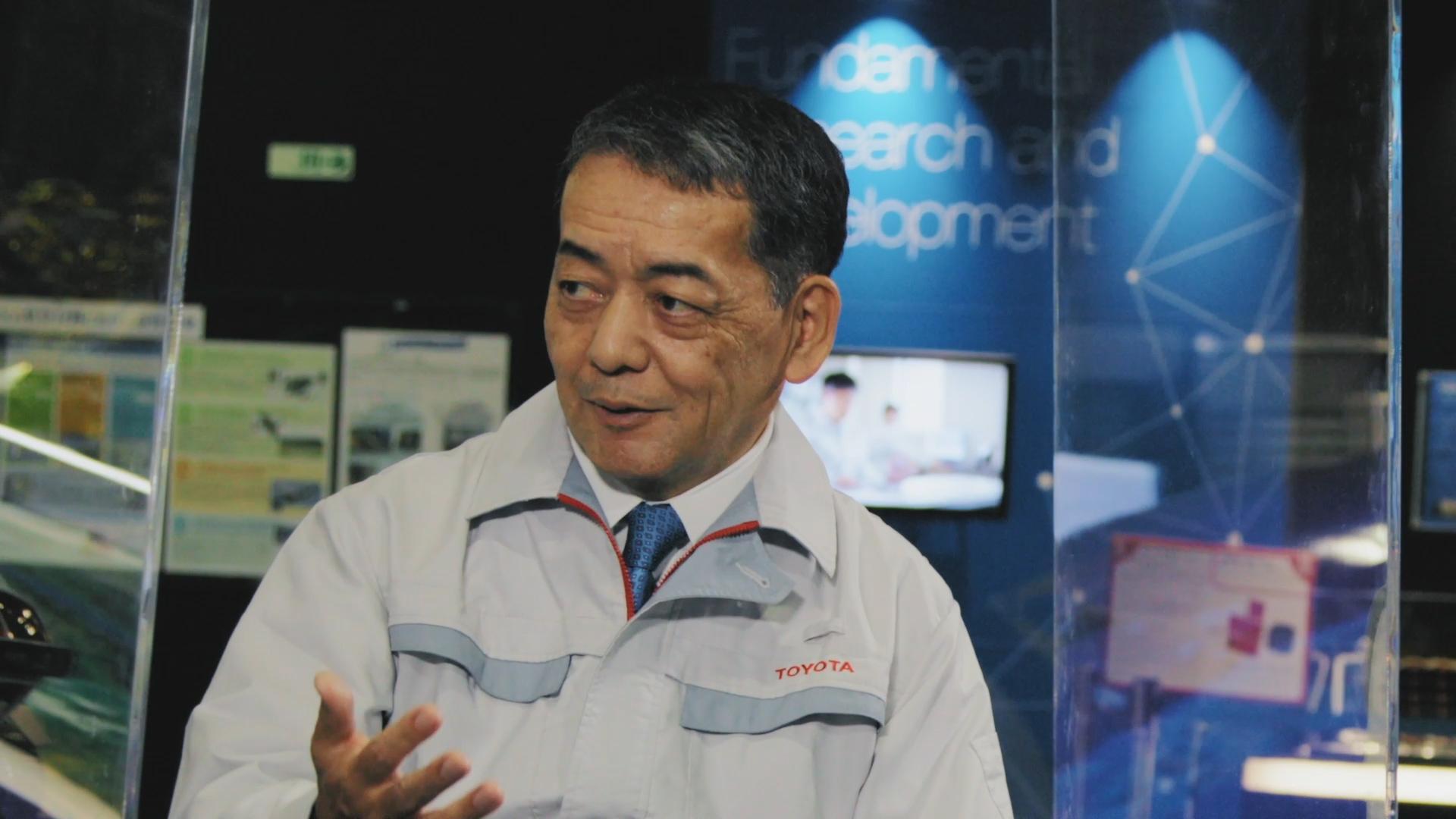
My first question is for Chief Competitive Officer Terashi – I want to ask how your expertise in engineering led to working on various projects with the JAXA team?
Terashi:
It started out with a working group where we discussed what kind of mobility we want to create in the future, and one of the ideas was creating vehicles for outer space. Though this didn’t really grow into anything major for a while, we exchanged information with JAXA and began discussions about doing a joint project involving vehicles within Japan, which led us to where we are today. This project is not exactly something that we had planned at the outset.
Toyota Times:
Is that right? So this isn’t something you had always dreamed of doing from a younger age?
Terashi:
No. Space mobility was just one among many proposed projects that young people were interested in pursuing.
Toyota Times:
Earlier, I heard Mr. Ohmura started to think about this around four years ago. For about the last three years, Mr. Suenaga experienced challenges, and during that time he presented various ideas that ultimately didn’t lead anywhere, until you came along to save him.
Terashi:
Apologies, but I don’t remember that at al
Toyota Times:
He remembers it very clearly.
Terashi:
I do try to make it seem like I remember.
We get many proposals, and it’s likely I made positive comments to each one.
A chance to learn “what we don’t know” from the surface of the Moon
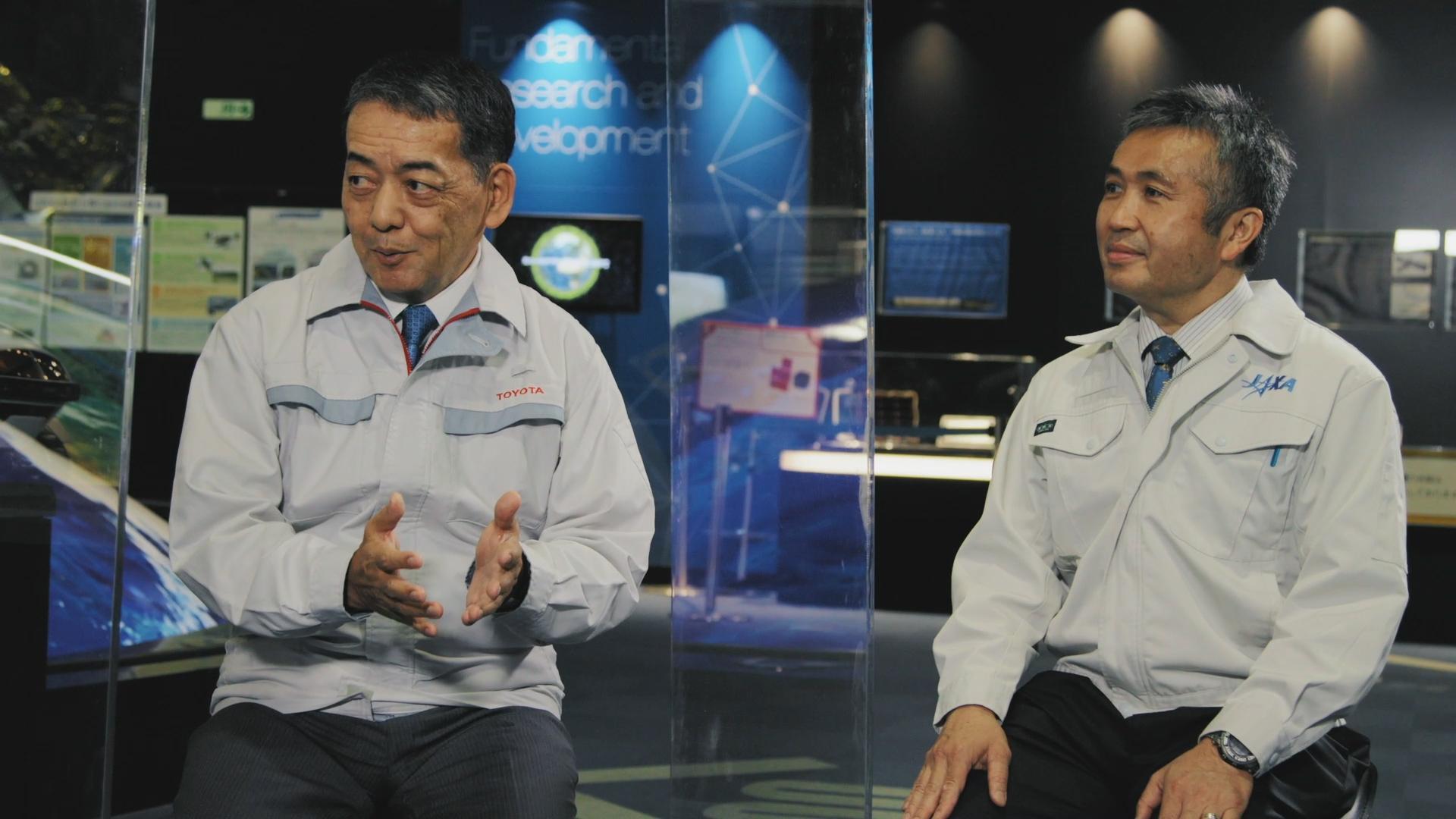
I think it comes down to an engineer’s curiosity. Our desire to start a new project depends on whether the engineer has the curiosity to pursue it. A fundamental part of engineering is the process of unraveling the unknown. When we talk about the surface of the Moon, we start from learning what we don’t know.
Toyota Times:
Yes, that’s where you start.
Terashi:
This process is normally not part of our work, so initially, there was that feeling of wanting to try something new. I just thought that I wanted to have a go at it. Right now, trying to incorporate the technologies commonly referred to as CASE into the lunar rover is just the right challenge for us. We probably can’t make that leap without a hop, step and jump, and I feel that this project allows us to raise our goals in various areas.
Toyota Times:
After spending the day here, I’ve seen many different things coming together. I felt the same way last year – setting a pressurized crew rover on the Moon’s surface is a truly grand experiment that encompasses many different things, and today I got the sense that all of this is coming together.
Terashi:
That’s right. We might have begun with the idea of a vehicle for traveling on the Moon’s surface, then we started looking at, for example, using hydrogen as a fuel. If the vehicle is to run on hydrogen, we need water to make that hydrogen. If the Moon’s surface contains water, we can use this to create a hydrogen society, which could lead to building cities. This idea embraces the same approach as Woven City, to create a vast world for humans with cars. I believe that the individual technologies needed for this are in the area of CASE.
As we tackle many different aspects while moving forward, each one feels like a separate project, but I think that, beneath the surface, all of these pieces are actually linked together.
It was a Toyota vehicle that pulled the retiring space shuttle
In that sense, Mr. Wakata, could you share your thoughts as an astronaut working with Toyota on the project, including what this collaboration means to you and what you feel it achieves?
Wakata Koichi (Senior Advisor, Astronaut, Japan Aerospace Exploration Agency):
The first time I went into space, actually, was on the Space Shuttle Endeavour. I stayed for a long period on the space station before returning once more on Endeavour. Later, when the space shuttle retired, it was a Toyota vehicle that pulled it to a museum in Los Angeles. This spaceship, a symbol of American prestige, was being pulled by a vehicle from Japanese company, Toyota. To me, this was proof of how much America trusts these vehicles.
Toyota’s technology and reliability are unrivaled in the world. While the same is true of many things, space in particular is about putting safety first, and for a rough place without roads like the lunar surface, reliability is crucial to coming back alive. In that sense, being able to conduct this joint research with the team at Toyota gives me confidence that, even in space, we can accomplish our missions safely and reliably. This is not just me as an individual, not just as a Japanese person – but astronauts from around the world feel the same way, I think.
I believe that a new generation of astronauts will take this Japanese mobility to the Moon’s surface and create a sustainable lunar society, and eventually, the technology that is cultivated on the Moon can also be used in exploring Mars. This is going to be a truly long-term initiative through which Japan’s trusted technology can also contribute to the world’s development of space. I look forward to seeing it happen, and hope that Japanese astronauts will make their presence known in the world by helping to pilot these rovers on the Moon’s surface.
Technology provides further links to the future
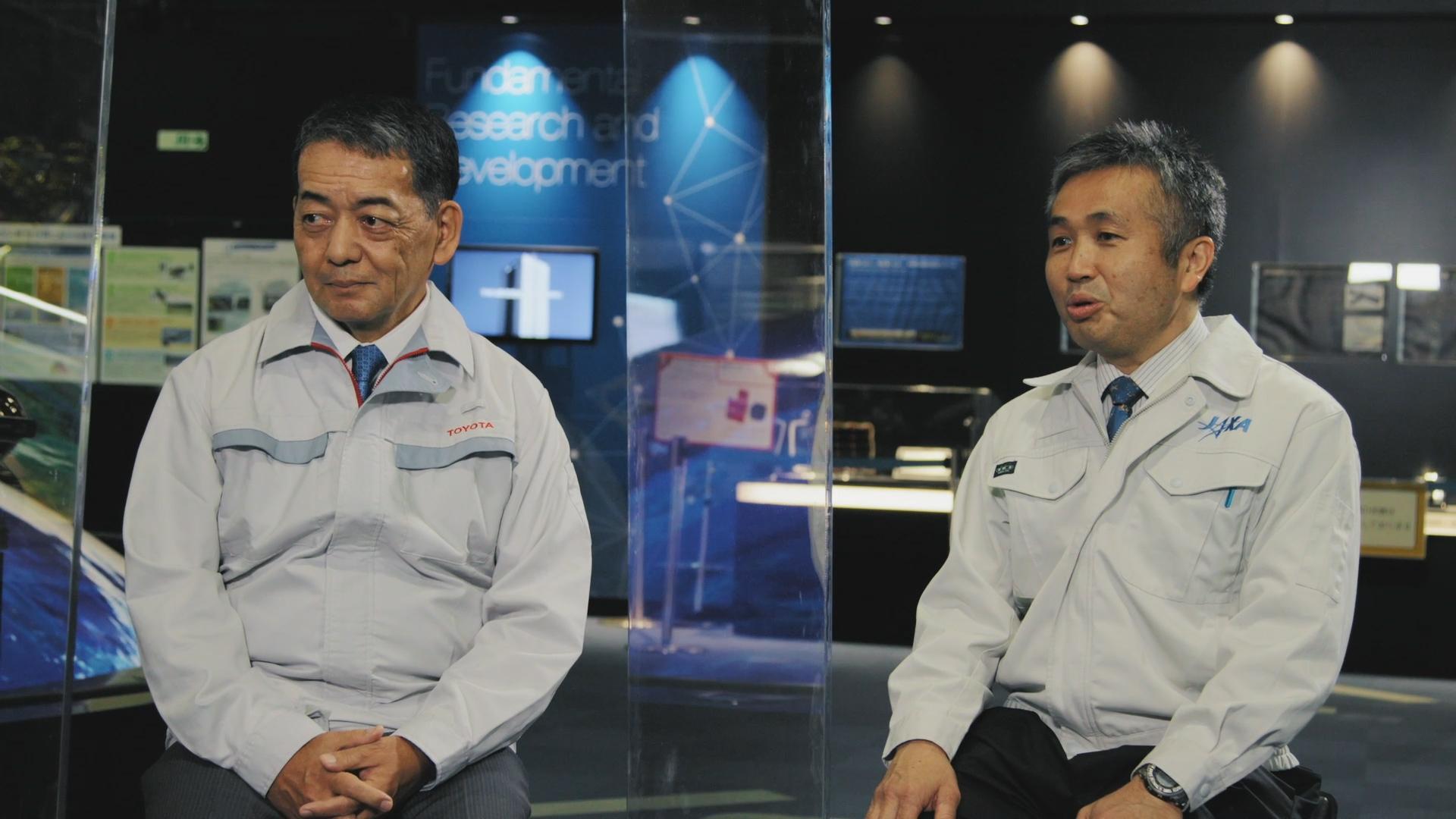
Meanwhile, you’re both working towards the same goal in 2029 – how do you feel right now about the feasibility of that future, and your own expectations?
Terashi:
When this was first proposed, I was honestly worried that we would not have enough time. In the case of developing a car, we normally take about five years from planning to launch. So this project gives us no more than two such cycles. Because we can’t go out and see the real thing (genchi genbutsu), we mostly have to replace genchi genbutsu with simulations.
That being the case, I expected difficult challenges when it came to implementing feedback, but recent connectivity has allowed us to use various software throughout development to potentially speed up the feedback process. And so, what once took five years may be done in four, then down to three, as the pace continues to accelerate. I think the approach now is to do what it takes to meet our goal.
Wakata:
As Mr. Terashi mentioned, I think we can solve software problems by using simulation. And I believe many of the challenges we may encounter can be overcome with proper testing here on the ground, for instance in the types of test chamber that you saw today. There we can simulate the very low temperatures of space, creating an environment to match the minus 170 degrees Celsius on the Moon.
One of the big differences between the Earth and the Moon is the thermal environment. While a vehicle might work here at hot or cold places on the the Earth, it is extremely difficult to ensure that it will also run on the Moon. There is also the lunar sand, called regolith, with sharp, tiny grains. Replicating driving performance in such conditions is rather difficult to do on the Earth.
Instead, we can utilize the Japanese Experiment Module ‘Kibo’, on the International Space Station, which is at zero gravity. By spinning a centrifugal accelerator onboard, we can replicate the Moon gravity, which is one-sixth of the Earth’s gravity.
Then, by placing regolith inside and observing its behavior, we can investigate how it would affect the traction of the lunar rover. In this way, we can utilize the space station to simulate the environment on the Moon’s surface and conduct various experiments. I think that using the space station for such experiments, to test things that are not possible through software simulation, is a very important part of preparing for our activities on the Moon.
But the rover is more about just mobility or maintaining a living environment. As a means of transport, it will contribute to technologies that allow us to continue sustained activities on the Moon, such as crewed bases or factories. Through this, we can create something like a miniature version of Woven City on the Moon and, once humanity aquires these capabilities, we can use them on any celestial body with gravity. Specifically, I can see these technologies being useful even on Mars, which has one-third the gravity of the Earth.
Given that one of the big goals of international space exploration is to expand humanity’s sphere of activity, in that sense, the Moon serves as an opportunity to test such technologies for what lies beyond.
Water must be “reused” in space
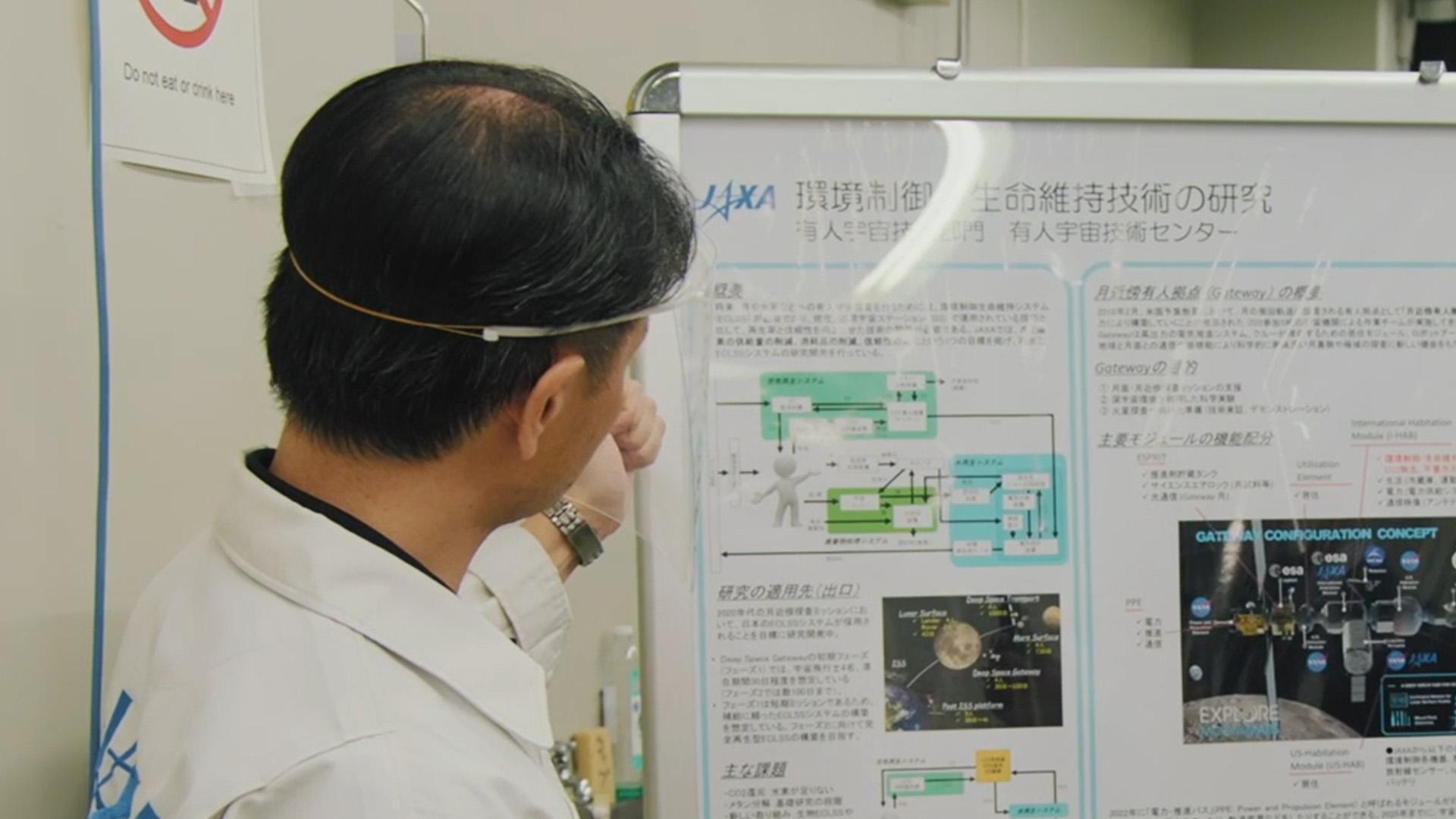
Nice to meet you.
Hiroki Furihata (Human Spaceflight Technology Center, Human Spaceflight Technology Directorate, Japan Aerospace Exploration Agency) :
Hiroki Furihata, from JAXA. Nice to meet you.
Toyota Times:
Thank you for your time. What are we going to see today?
Furihata:
I will show you what’s known as the life-support system.
Toyota Times:
What’s this?
Furihata:
This is water. When we electrolyze water, the H2O decomposes into hydrogen and oxygen. We are researching how to use that oxygen effectively to sustain the lives of astronauts. One method is known as the Air Revitalization System. Another is waste treatment, or what we call ‘water recycle’, which uses the astronauts’ urine, as well as their feces.
That’s right. While it is only a small amount, excrement also contains water, so we are looking at extracting as much of that as possible for reuse.
Toyota Times:
You’ll do this because water is so precious, right?
Furihata:
It certainly is.
A training/proving ground for engineers
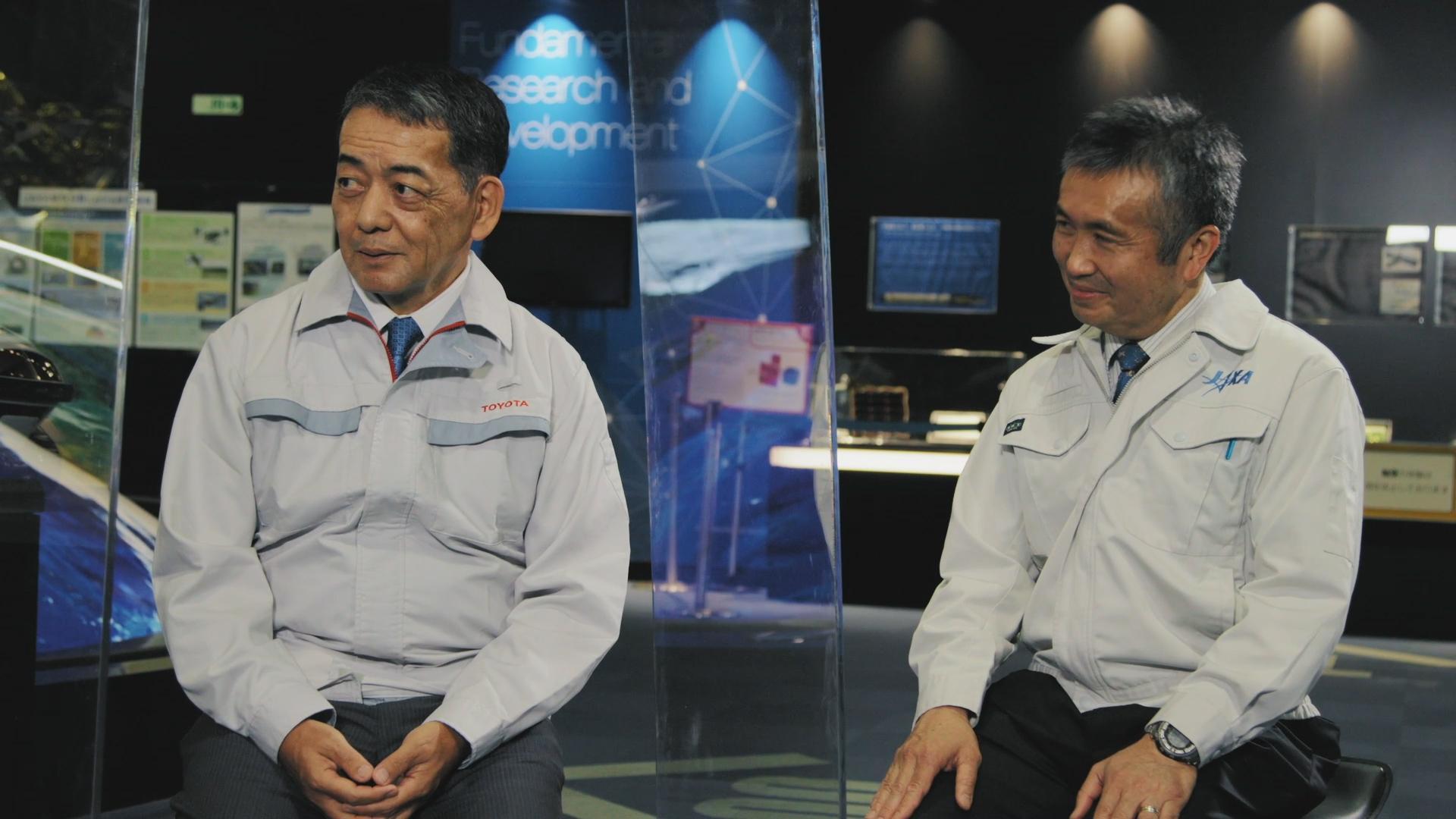
What does President Akio Toyoda say about this project?
Terashi:
I think it was last year, when he was interviewed in America, and was asked whether this was going to be profitable.
Toyota Times:
And?
Terashi:
He replied that it won’t.
Toyota Times:
He said that it won’t be profitable?
Terashi:
When asked ‘then why do it?’, he thought for a while before replying along the lines of ‘it’s our engineers’ dream’. Seeing that, I realized that this was our starting point. The process of, as I said before, finding and solving various problems under various conditions is identical to how Toyota approaches work every day.
Whether on the Earth or on the Moon, all the different work that we will undertake in the future is part of the same vast cycle, and so the thinking was that, if this enables our technology to make a big leap forward, one such project would be alright. That said, we haven’t exactly been given free rein with the checkbook.
Toyota Times:
Well, it’s not going to make much money, is it? I mean, there’s no way to make money, is there, just by building this? It’s not like you’re getting anything in return.
Terashi:
But as I’ve been saying, I think this, too, will be a valuable project if we are able to turn it into a major step towards our future technology, towards sustained growth as a company, for example, by developing our talent or realizing new processes.
Toyota Times:
And you remain committed to Toyota’s philosophy of making the space inside the vehicle safe and secure, correct?
Terashi:
Yes, that’s right.
Toyota Times:
Just now, you mentioned the word ‘talent.’ So this space project is also a way to cultivate talent?
Terashi:
Correct. In particular, the conventional way of doing things has people focusing only on tires, or only on the car body, but for this project, we can’t make the whole just by looking at individual aspects. This means that we have to create engineer teams differently from the conventional groups, and I see these as true opportunities for hands-on learning.
“I wanted to be part of it”

You have young engineers like Mr. Suenaga, who I spoke to earlier, wanting to get involved in these projects, to go to outer space, to create a vehicle that will drive on the Moon. As you said earlier, they have the passion and enthusiasm. But, at the same time, you probably knew in your mind from experience that this is not likely to make any money, and that you would just have to continue spending throughout the project. At that point, having worked as an engineer for your entire career, did the project somehow speak to your engineer senses?
Terashi:
Earlier I spoke about the presentation from our engineers. Well, we receive quite a few presentations every year, which makes them very difficult to judge as to whether or not they can be realized, but for sure they each bring something interesting. What first stood out in this project was that the subject was outer space rather than the Earth. It seemed unlikely that we could make this happen, but it did catch my interest.
And while we couldn’t turn this into reality until the collaboration with JAXA came about, the experience of past projects had shown me that if you get the ball rolling, something will happen, so we felt that this was worth pursuing a little further. Even if we couldn’t realize our plans, I felt that perhaps the process may yield something different, so we decided to push ahead for a while longer.
Toyota Times:
So this means that something about this struck you as interesting, right?
Terashi:
I’m sure I wanted to be a part of it.
Toyota Times:
But given your position, you couldn’t take it on yourself, and, knowing the money was limited, you delegated to someone else. Maybe joining with JAXA also played a big part in making this possible?
Terashi:
Yes. Going through that process of considering various plans doesn’t actually require a great deal of money, because you’re not making anything. So one of the ideas we had for expanding the project, when we gave it the green light, included reaching out to various relevant places in that brainstorming phase in the hope that this might yield something new.
Toyota Times:
And as a result, now you have people like Mr. Suenaga who, despite being back at JAXA after his assignment at Toyota, still has his Toyota employee pocketbook tucked away. He really feels as though he is part of the Toyota team. Do you think this level of motivation among your team comes from the fact that you felt this was interesting enough to give them the chance?
Terashi:
I’d be very glad if that’s how they feel. More likely, they’re saying a lot of other things behind my back.

